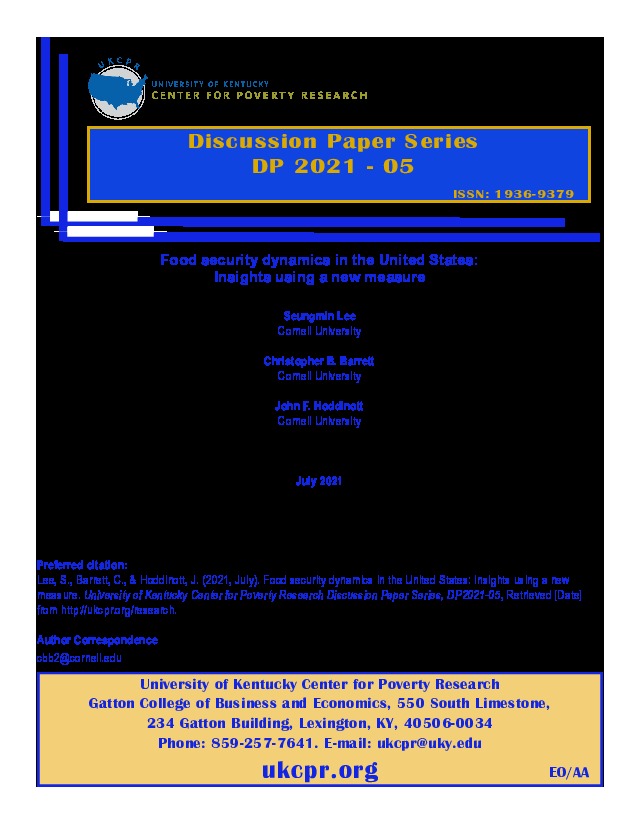This paper introduces a new measure, the probability of food security (PFS), to study food security dynamics in the United States. PFS represents the estimated probability that a household's food expenditures equal or exceed the minimum cost of a healthful diet, as reflected in the United States Department of Agriculture's Thrifty Food Plan monthly cost estimates. PFS matches the official food security prevalence measure in a given period but enables richer study of the dynamics and severity of food insecurity. Applied to 2001-17 data from the Panel Study of Income Dynamics, we find that roughly half of households that become newly food insecure resume food security within two years. But the positive association of persistence with prior food insecurity means that half to two-thirds of food insecure households at any given time remain food insecure at least two years later. PFS varies dramatically with income and demographic characteristics, such that inter-group prevalence and severity measures differ by one or two orders of magnitude. Households headed by non-White women with low educational attainment disproportionately suffer persistent, chronic food insecurity, while White-headed households without a college degree account for most of the business cycle-associated variation in national food insecurity.
Research
PSIDPDF Thumbnail
